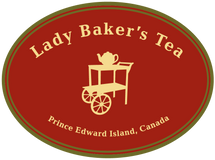Tea on the Tundra
By Andrea Ledwell
When one thinks of the arctic and Canada’s north, it is likely a snow covered expanse that comes to mind. But after my brief time living in Iqaluit, the capital of Nunavut, it is most often the colourful tundra that I remember, rich in red, yellows and purples, that paint the landscape in the summer and fall.
Nunavut has a surprisingly vast array of flowering plants, as well as lichen and mosses, growing on the tundra. Plants of the region include the official territorial flower, purple saxifrage (Saxifraga oppositifolia or aupilaktunnguat in Inuktitut), that grows in small patches and blooms in June, often dotting the snow with its purple flowers, and Arctic cotton (Eriophorum callitrix or pualunnguat in Inuktitut ), a sedge plant with a woolly cotton ball top that appears midsummer as well as the plentiful berries, like blueberry (naqutit) and crowberry (paurngait), that you see people picking on the tundra in late summer.

Purple Saxifrage (Saxifraga oppositifolia or aupilaktunnguat in Inuktitut)
Many of these plants have been traditionally used by the Inuit people for medicinal remedies, and other practical uses, like Arctic cotton, which was mixed with seal oil to make candle wicks. It is not surprising that a number of these plants are used for nutrition, and many are also used to make tea. For instance, when the purple saxifrage flowers die, the leaves and stems of the plant are often steeped for a beverage. Arctic fireweed (Chamerion latifolium or paunnait) leaves make a tea that could be used for a variety of medicinal purposes, like stomach aches or digestion issues.

Arctic cotton (Eriophorum callitrix or pualunnguat in Inuktitut)
One of the most common plants used for making tea in Nunavut is Labrador tea. Not really tea, and not specific to Labrador, Labrador tea is actually the name of three different, but closely related plant species of Rhododendron which is part of the Ericacaea family, or heath family (like heather). Known in Inuktitut as mamaittuqutik, Labrador tea is a low evergreen shrub with thick green leathery leaves, and fragrant white flowers, that grows in bogs and on the tundra. It has been used by Inuit as both an herbal remedy and beverage for thousands of years.
The most common Labrador tea species found in Canada (and Northern US) is Rhododendron groenlandicum which has a variety of names including bog Labrador tea, swamp tea, Hudson’s Bay tea, or even storytelling tea, as the mild narcotic effect could loosen the tongue. The name "groenlandicum" is a reference to Greenland, where the plant is also found. Rhododendron neoglandulosum, or trapper’s tea, grows more in the bogs and marshes of Western Canada.
The Labrador tea species most widely found in Nunavut is the variety Rhododendron tomentosum, also known as wild rosemary, or northern Labrador tea. As a tea, it is recommended that one steep the leaves, not boil them as it is considered to be toxic if consumed in concentrated doses. Similar to other plants of the Ericacaea family, Rhododendron tomentosum releases a pungent oil called ledol, and the more one steeps or boils the plant, the more ledol it emits. Too much can be lethal (and smelly!) but traditionally could be used topically as a removal of lice or parasites, or taken as medicine to relieve respiratory problems, and fever.
There is a certain amount of debate about the toxicity of all Labrador tea species, especially Rhododendron tomentosum, but research does show that a cup of steeped Labrador tea has numerous benefits, including a good dose of vitamin C as well as antimicrobial properties. No matter, it has proved to be one of many plants understood by the Inuit people for its many uses.
Flowering Rhododendron Tomentosum (Ledum palustre or mamaittuqutik in Inuktitut)
In recent years, there have been commercially made tea blends that incorporate leaves from the Labrador tea plants, along with juniper and berries, to share with a wider audience. These have been quite popular products with consumers, and a successful enterprise for northern communities.

Crowberry (Empetrum Nigrum or paurngaq in Inuktitut)
The flora of Nunavut has much to explore; this is a mere introduction. I am grateful to field biologist and author Carolyn Mallory for providing some clarification on the species of Labrador tea in Nunavut. Her book, Common Plants of Nunavut (Inhabit Books, 2012), co-authored with Susan Graham Aiken, would be a great starting point for those interested in learning more about plants of this part of Canada.

2 comments
That is not Purple saxifrage pictured here – that is moss campion a cushion plant. nice simple article otherwise. look at Rebecca Hainnu’s books, medicinal and edible plants of the arctic.
What an interesting post! Thank you for sharing :)